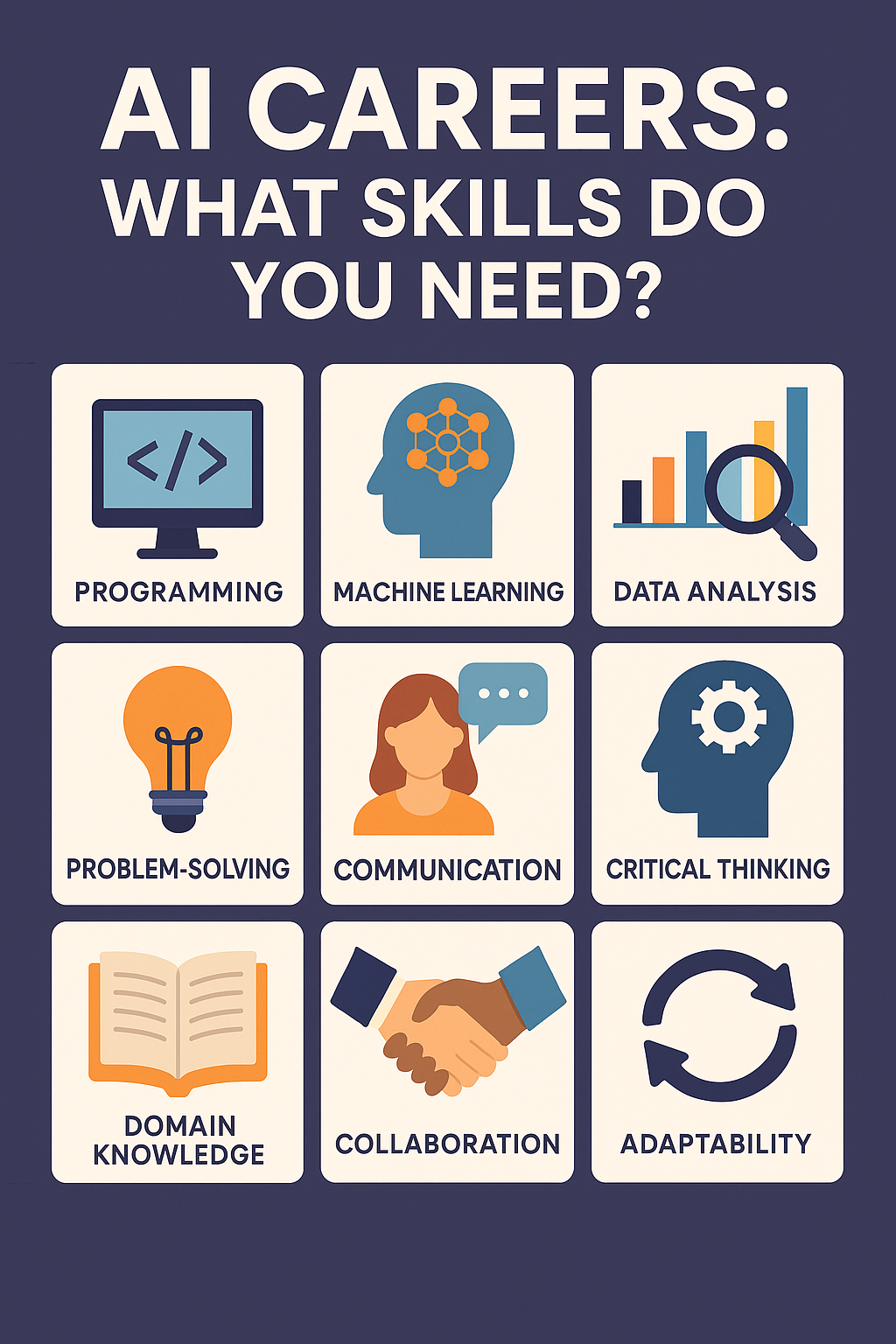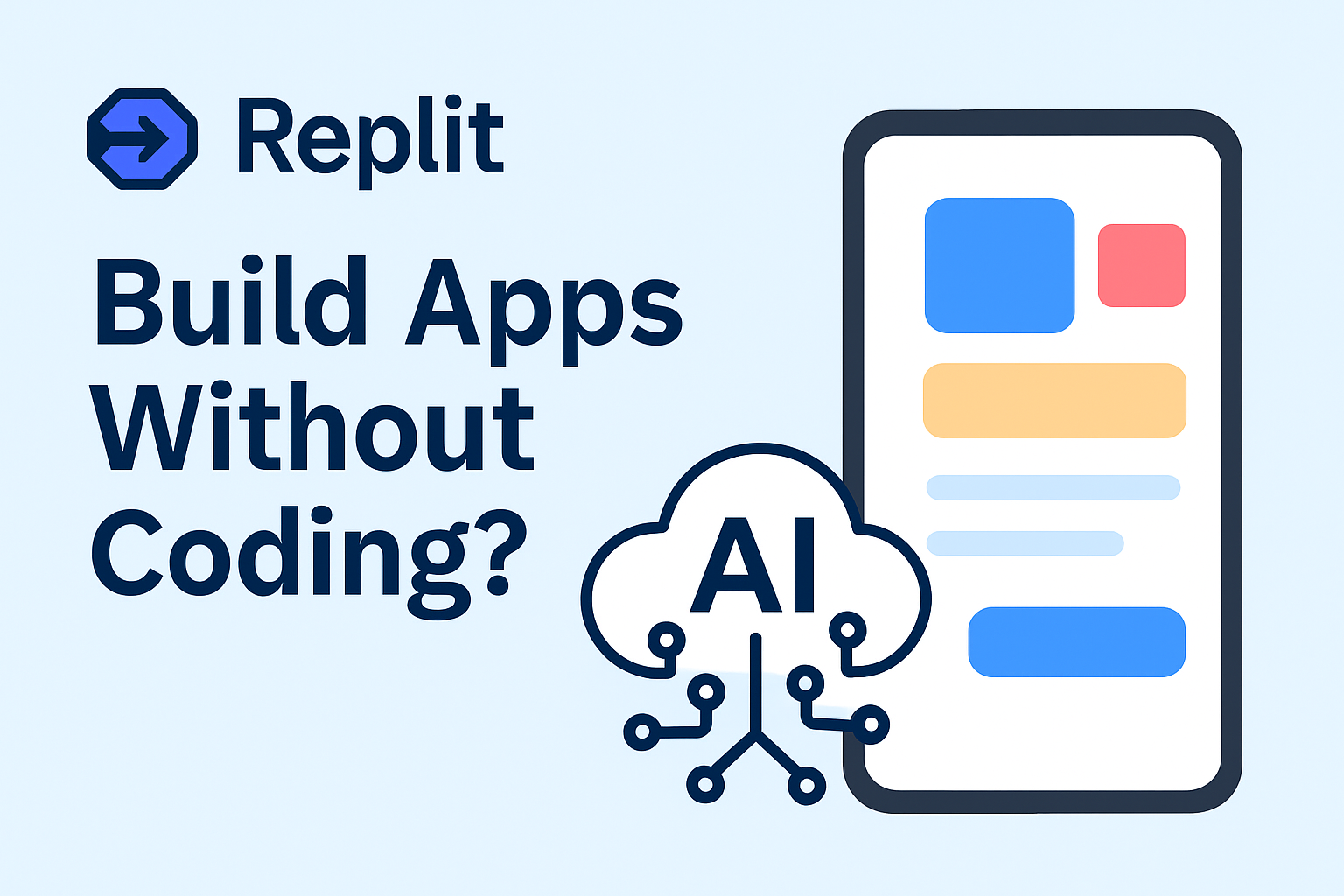1.Introduction
Global AI spend is set to top $500 billion by 2025 Artificial Intelligence (AI) has transformed from niche research topic to indispensable business tool in last few years Companies across healthcare, finance, retail, and entertainment are taking advantage of AI to Advance themselves from other companies yet demand for skilled professionals far outstrips supply if you’re a recent year graduate or a developer looking for upskilling your career in ai by machine learning now is the perfect time to break into AI. In this post, we’ll simplify the exact blend of technical knowledge and skills and knowledge employers are seeking, and we will show you how to build a standout AI portfolio, and point you toward the best certifications and courses. By the end, you’ll have a clear roadmap for developing the capabilities that will set you apart in one of today’s fastest-growing—and most exciting—fields. In today’s world

2.Why AI Careers Are Booming
Artificial intelligence careers are growing much faster due to a the process or state of conversing of technological advancements, economic incentives, and societal needs that have increased demand for professionals capable of designing, implementing, and maintaining intelligent systems
Because of this demand, many types of AI jobs have Created . Companies need data scientists to study and clean the data and machine learning Developers to build models that can learn data from it and learn data. and AI ethics experts to make sure these systems are fair and safe. These roles often pay well and can lead to quick promotions.
3.Core Technical Skills
To work effectively in the field of artificial intelligence (AI), you need a set of fundamental and technical skills. These skills are the backbone of most AI projects and will help you move from basic idea to working system
1.Programming Languages
Python: This is the most common language for AI. It has many ready-made libraries like TensorFlow, PyTorch, and scikit-learn that helps you build AI models much easier
R: Often used in data analysis and statistics. It’s less common for deep learning but still useful for exploring data and creating reports.
Java / C++ / Julia: these languages used sometimes where very high performance or integration with existing systems is needed.
- Mathematics and Statistics
2.Mathematics and Statistics
Linear Algebra: Understanding matrices and vectors is crucial because data and model parameters are represented in these forms
Calculus: Basic ideas of derivatives and gradients will help you understand how models learn by tweaking parameters to reduce bugs and errors.
Probability & Statistics: You need to know how to measure uncertainty, the work with probability distributions, and can run tests to see if results are useful and meaningful.
3.Data Handling and Wrangling
Data Cleaning: Real-world data is Unstructured. You must learn how to remove errors, fill in missing values, and convert data into usable structure and formats.
Data Transformation: Turning raw data into features (characteristics) that models can use. This may or will include scaling numbers, encoding categories, or extracting text features.
Databases and Querying: Should know SQL for relational databases (like MySQL or PostgreSQL) or using NoSQL tools (like MongoDB) helps you retrieve and store data
4.Machine Learning Basics.
Supervised Learning: Techniques like regression and classification
Unsupervised Learning: Methods such as clustering and dimensionality reduction
Model Evaluation: Using these metrics to judge how well your model works and perform tasks, and methods like cross-validation to test reliability.
5.Software Engineering Practices
Version Control: Using Git to track changes in your code, collaborate with your team, and manage different project versions.
Testing and Debugging: Writing test cases to catch errors early and using debugging tools to inspect model behavior or Performance or code issues.
6.Cloud and Deployment
Cloud Platforms: Should know AWS, Google Cloud, or Azure, which offer scalable computing resources and managed AI services.
Containerization: Using Docker to package applications and their dependencies
Model Serving: Tools like TensorFlow Serving or FastAPI to deploy models
4.Critical Soft Skills
- Problem-Solving
- Communication
- Collaboration & Teamwork
- Critical Thinking
- Adaptability
- Ethical Judgment
- Time Management
- Attention to Detail
- Curiosity & Lifelong Learning
- Storytelling with Data
Intro to Artificial Intelligence – Udacity
Platform: Udacity (Free/Paid)
Duration: 4 months (self-paced)
Focus: AI concepts, search algorithms, logic, planning
Ideal for: Strong coders with basic CS knowledge
Platform: edX (Free + Paid certificate)
Duration: ~7 weeks
Focus: Python, search, knowledge, ML, neural networks
Ideal for: Strong coders with basic CS knowledge
6.Conclusion & Next Steps
focusing on an AI career means more than mastering algorithms and writing code. Success in this fast-moving field depends on a How much you learn of technical know-how (programming, machine learning, data handling), soft skills (communication, critical thinking, collaboration), and a mindset of learning continuously. By gaining these abilities, you’ll not only build robust models but also communicate their value, work effectively in teams, and adapt as new techniques


